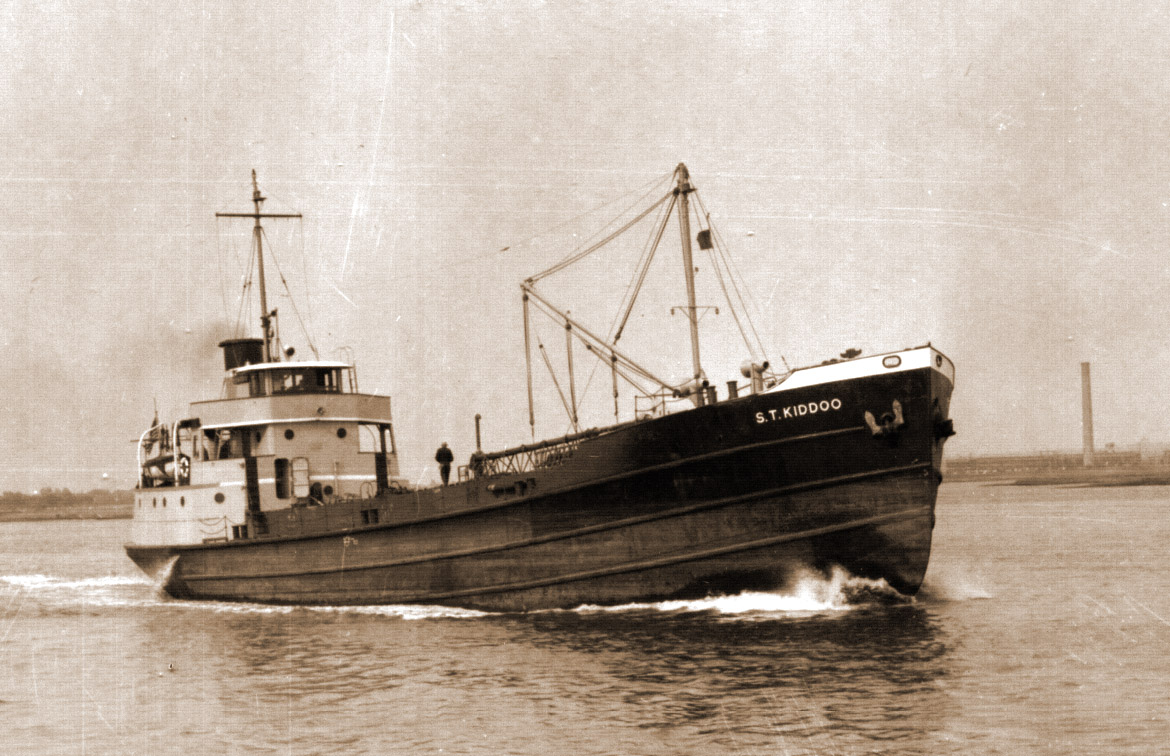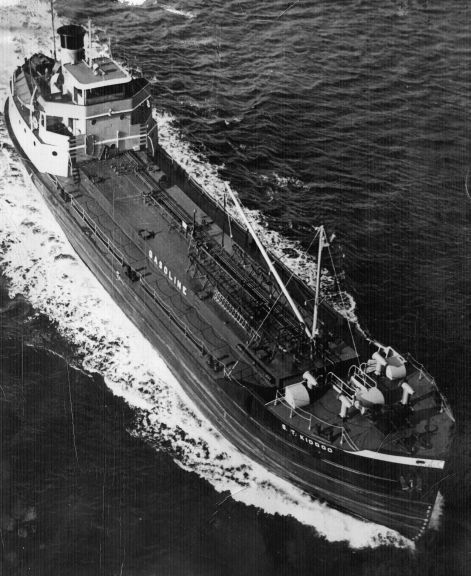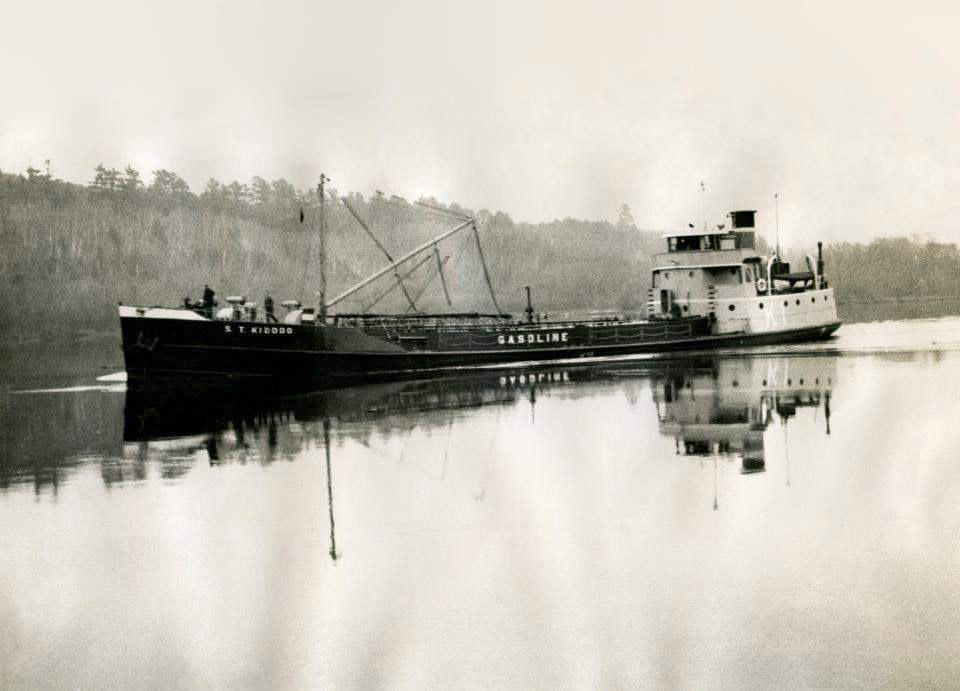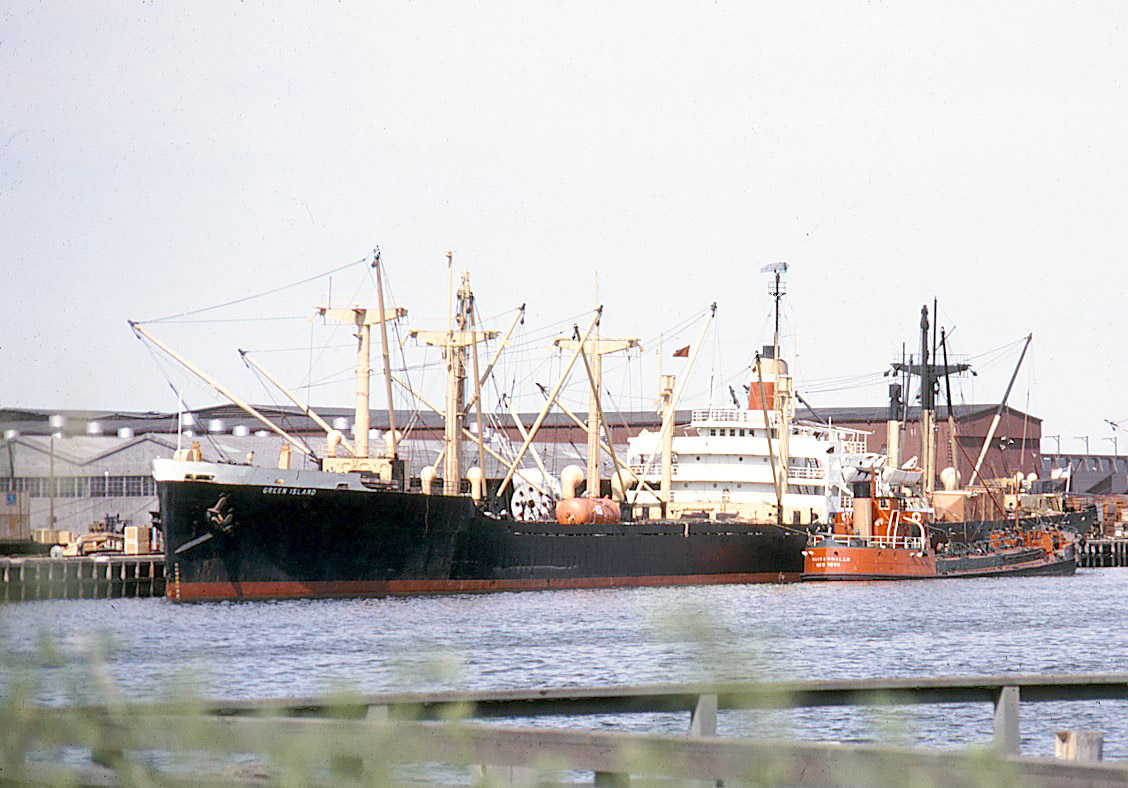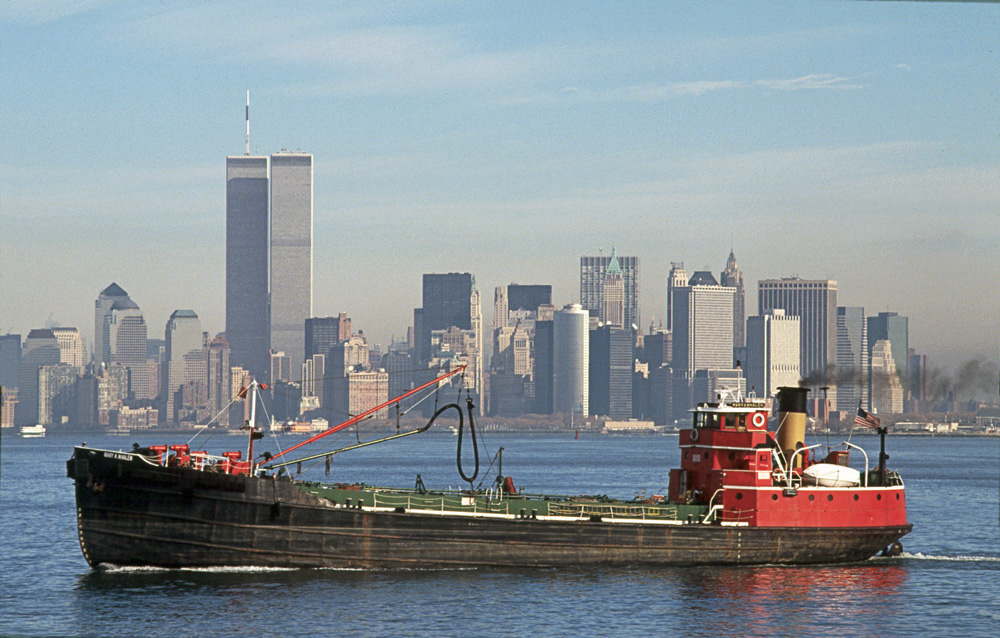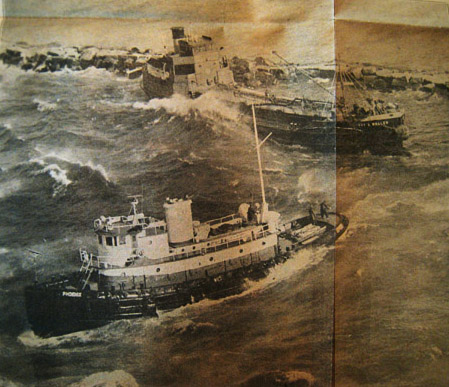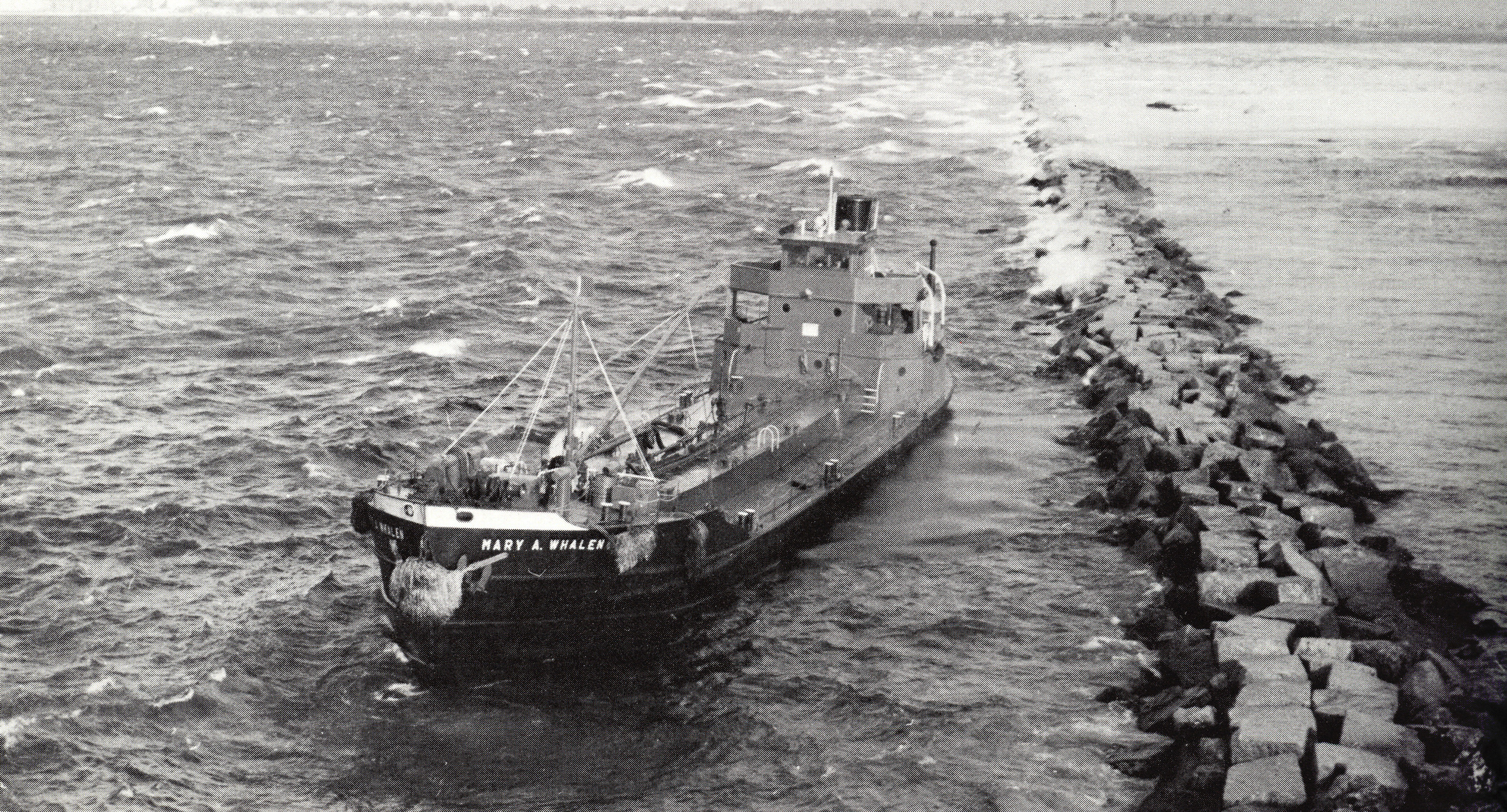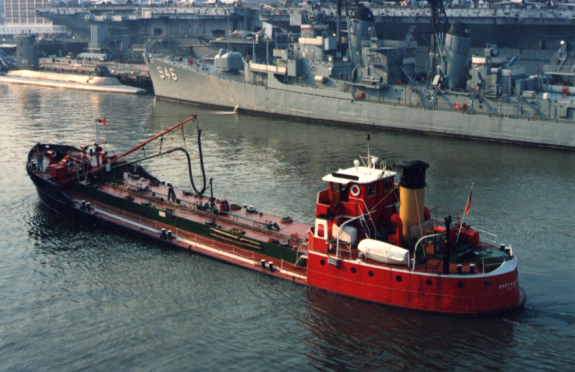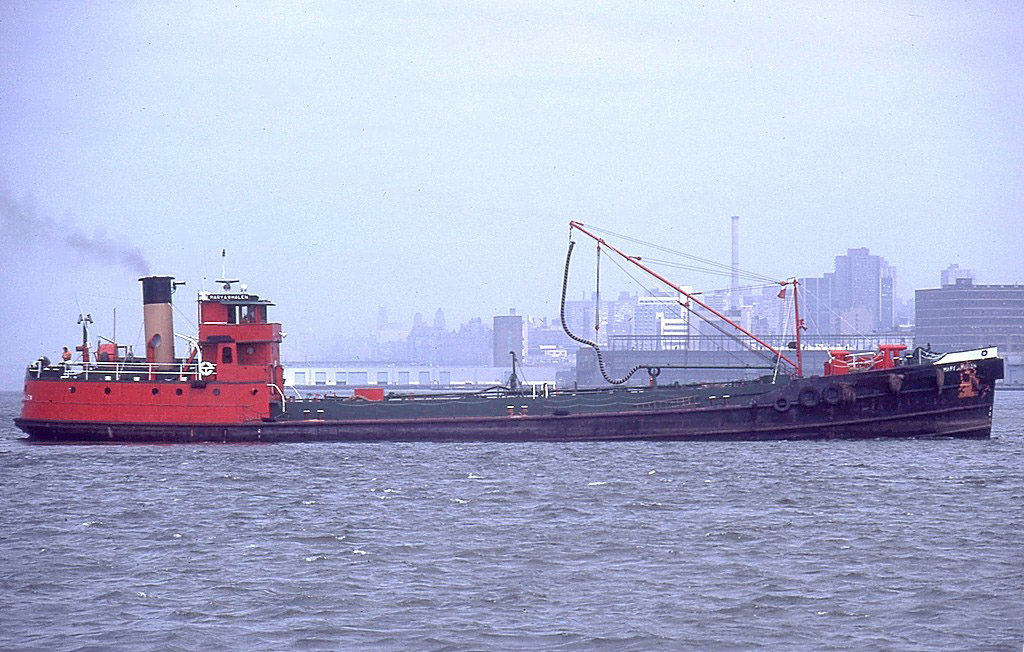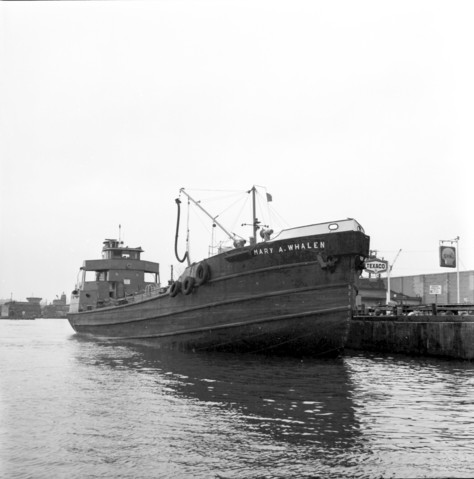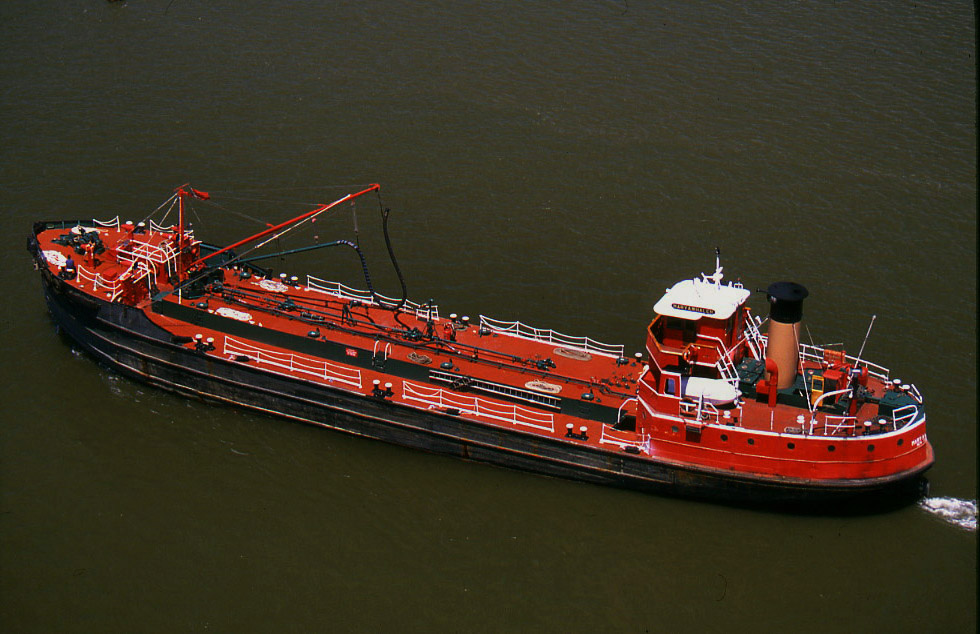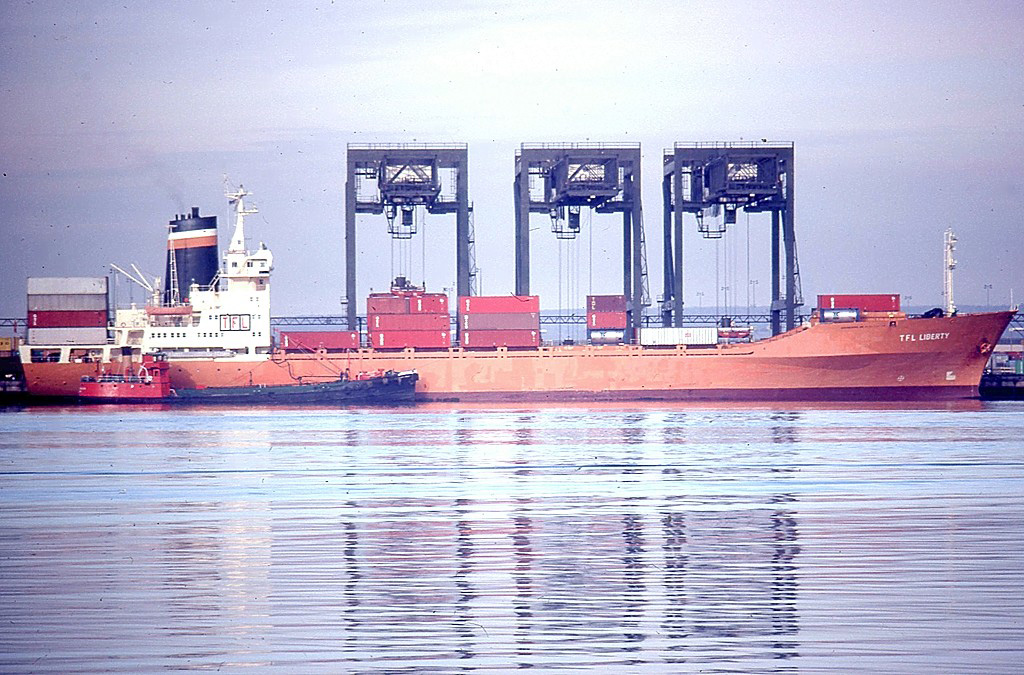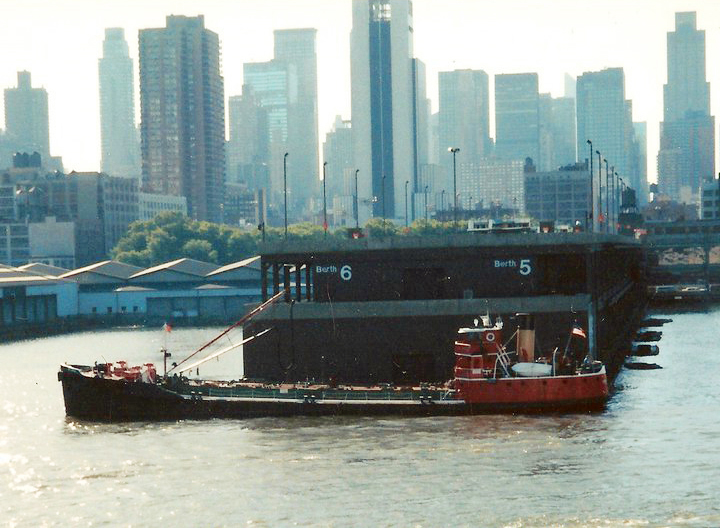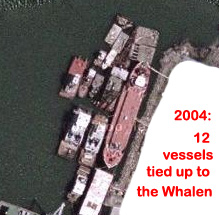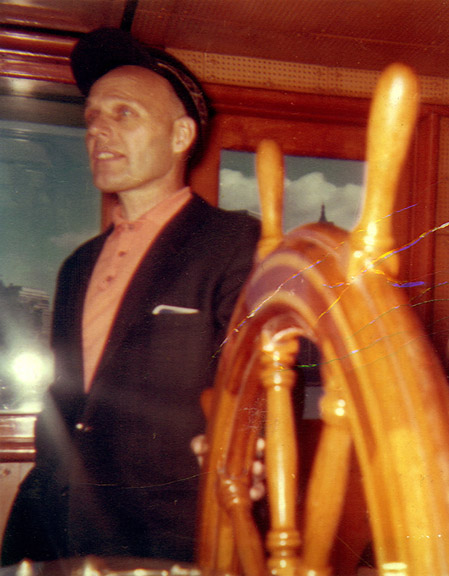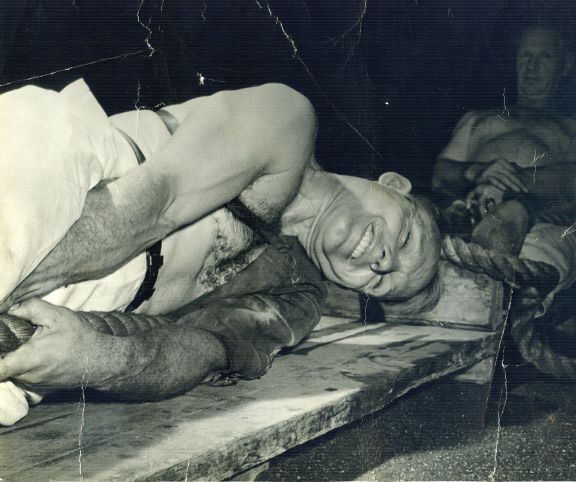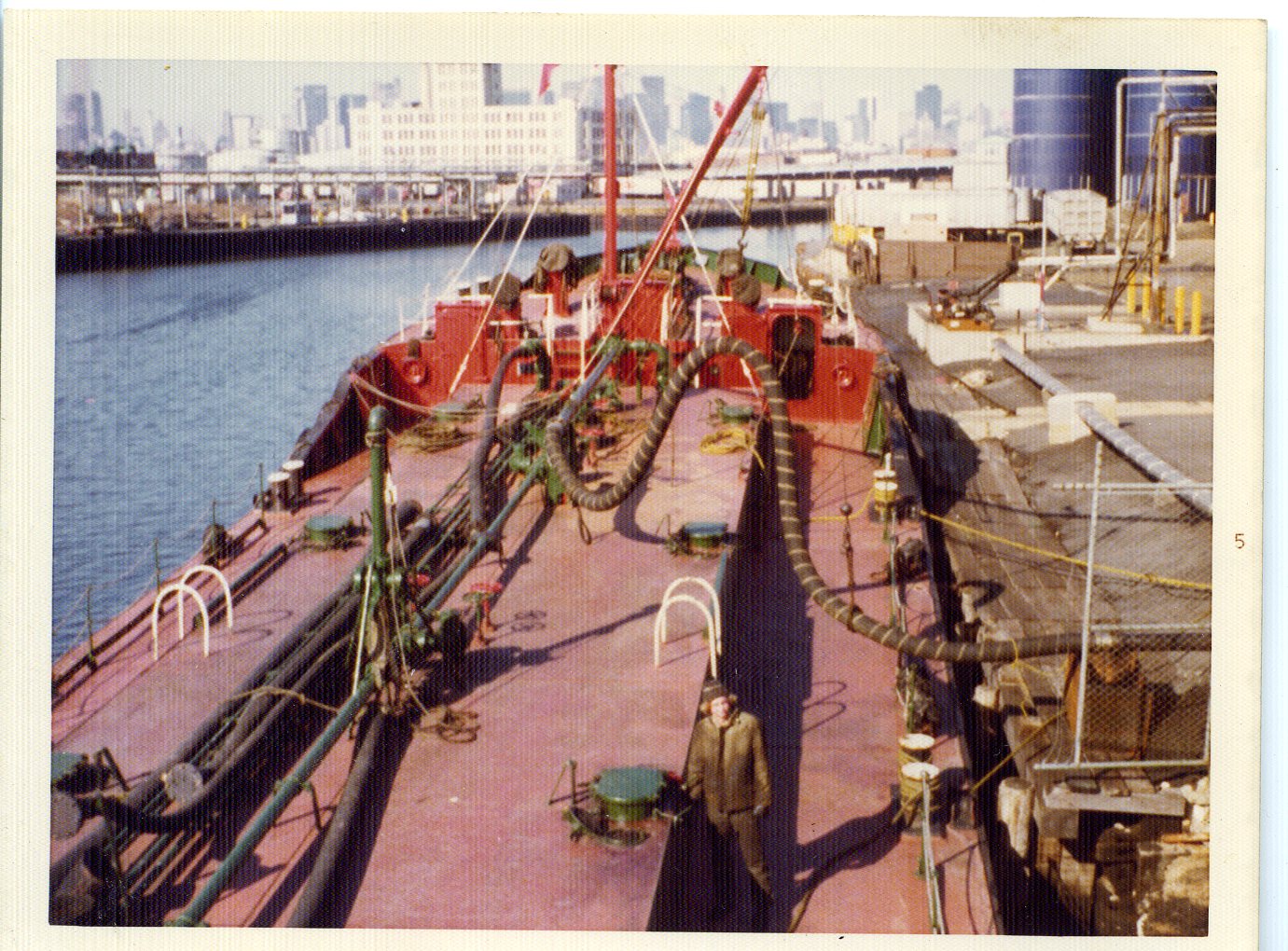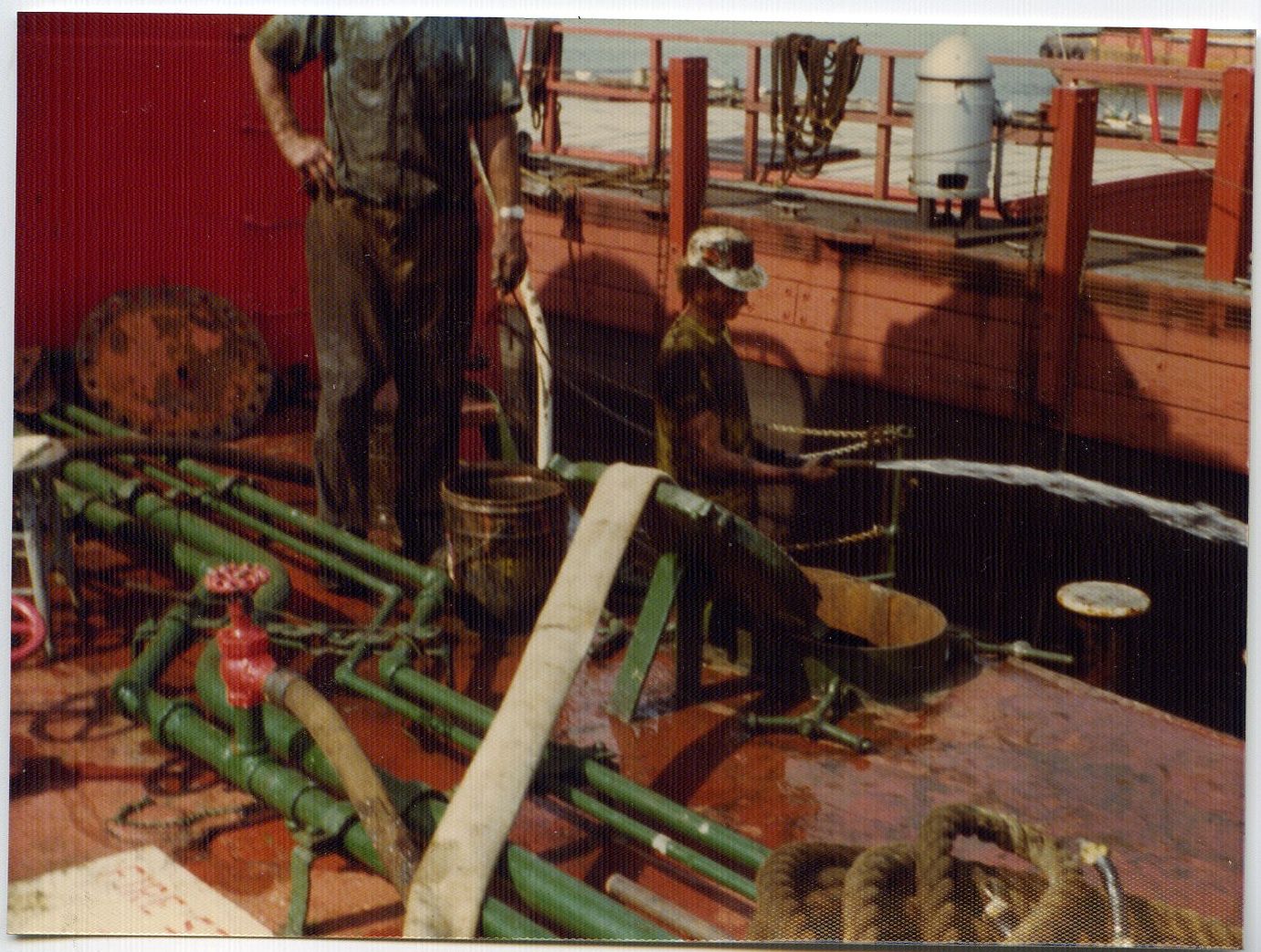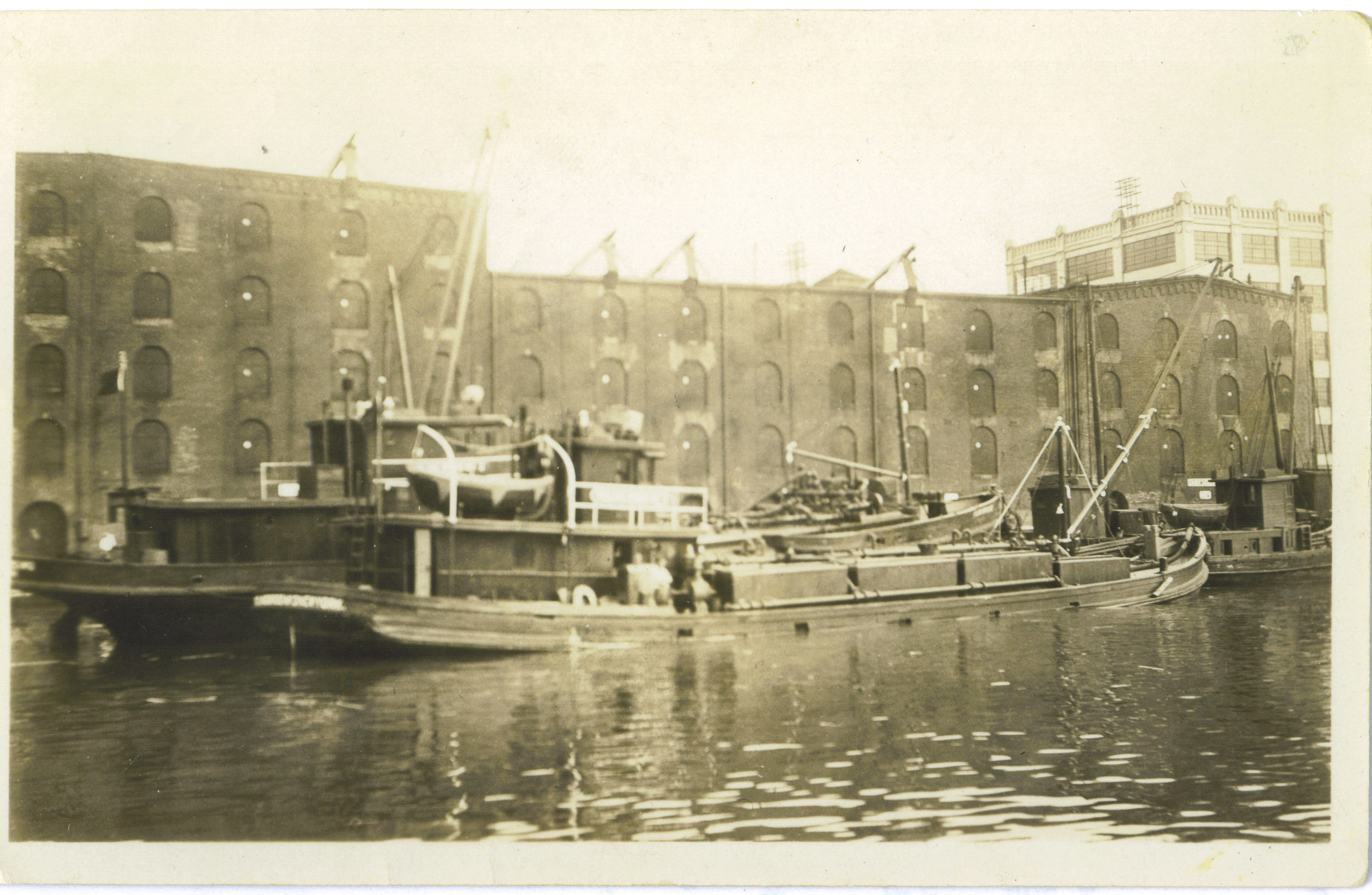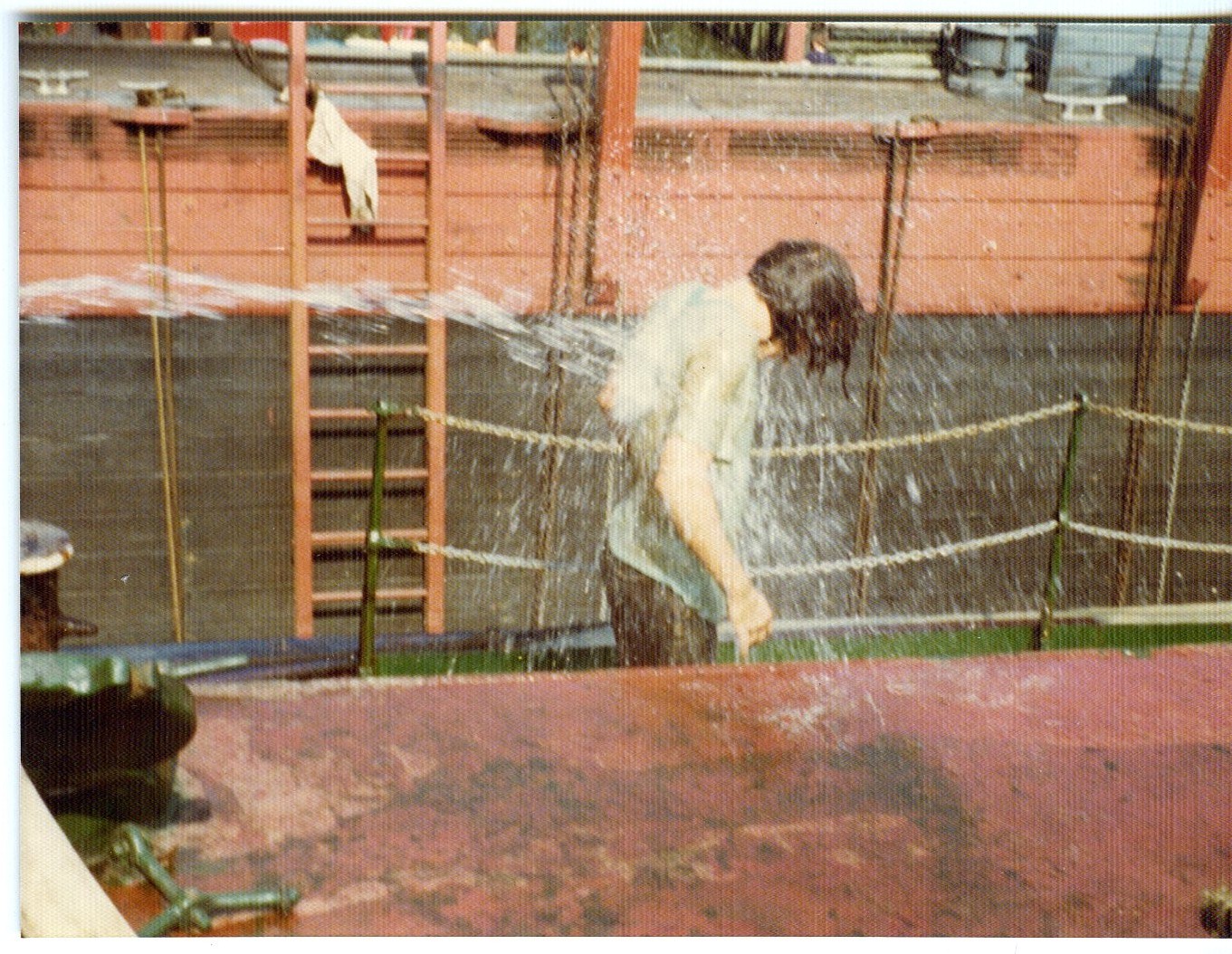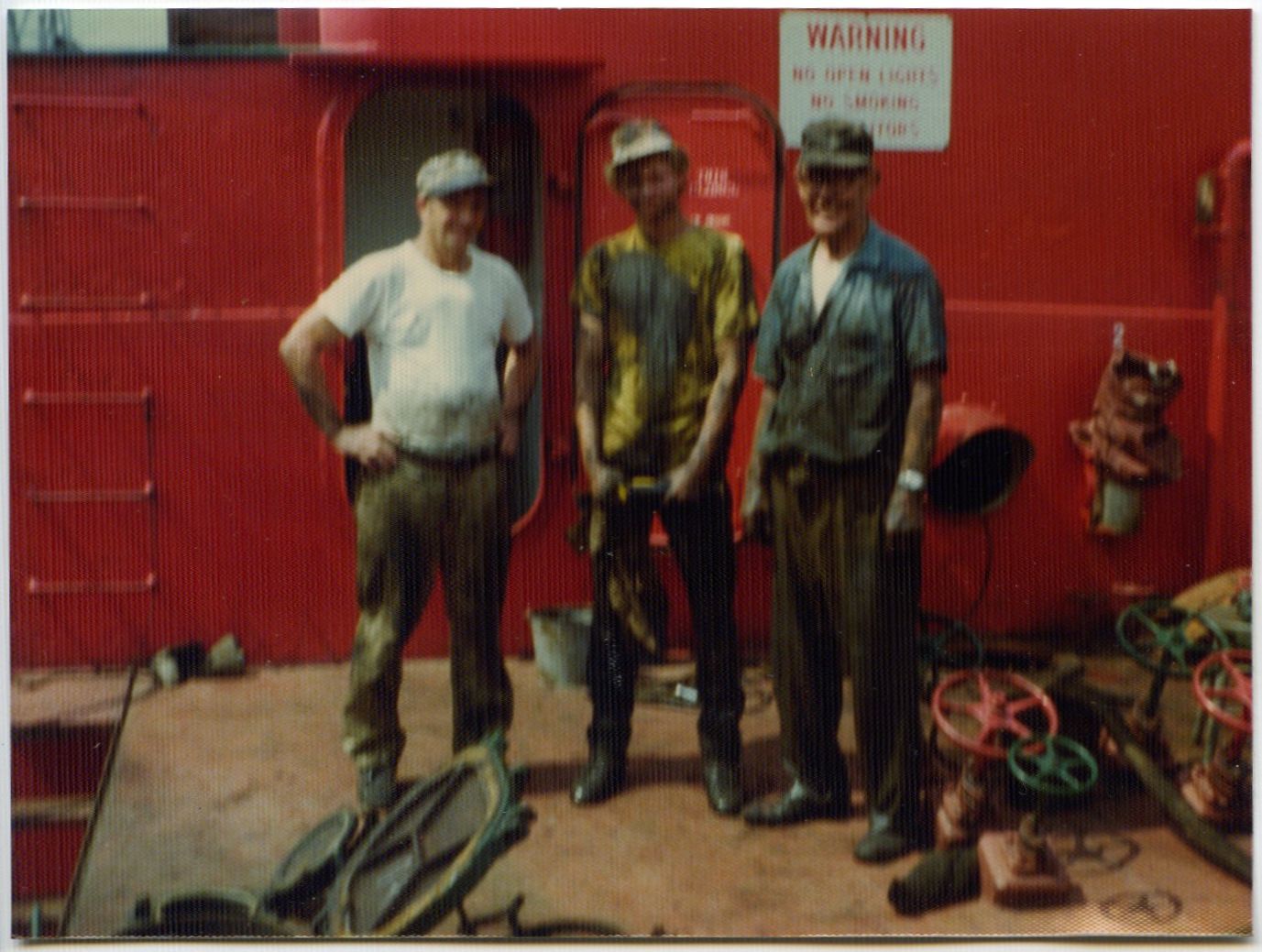Above photo shows the MARY’s famous 1968 grounding that led to the significant 1975 Supreme Court decision U.S. vs Reliable Transfer.
The main repository for info on the MARY A. WHALEN is now our virtual museum Red Hook WaterStories. Go to this link. It has more than on this page, and is the location we update.
Tour via the web
Listen to an audio tour about the ship. The tour is broken into short segments of 2-3 minutes in length, most of them associated with specific spaces on the ship.
A written guide to the MARY A. WHALEN is also available in several languages.
Ship plans
Plans are thanks to the Independence Seaport Museum
LOA 172', beam 31.5. draft 1'5' bow, 8' stern
Mathis 124-135-1 -- Hull 124 Tonnage offsets (5.3 MB)
Mathis 124-203-1 -- Hull 124 Molded lines (9.6 MB)
Mathis 124-480-1 -- Hull 124 Plan of elevation for main engine room (11.8 MB)
Mathis 125-207-1 -- Hull 125 General arrangement (12.4 MB)
The MARY is Mathis hull #124. The F.A. VERDON was hull #125 and was 38' 3" longer with another pair of cargo tanks. The plans are for both vessels, and the MARY (#124) has one less pair of tanks indicated by vertical dotted lines on the general arrangement. During the 1940's, Bushey considered adding 30' to the MARY'S cargo tanks, and we have several blueprints from this period. The expansion was never completed. We would like plans to the MARY. The F.A. VERDON was scrapped in 1976.
Our Guide to the words for ship parts.
Why she is significant?
Last of her kind in the USA! On the National Register of Historic Places! A rare surviving example of a bell boat! (Her official status was raised from being locally significant to National, on December 12, 2023. Read the enhanced research by our Historian/Curator Peter Rothenberg that substantiated the MARY’s national significance.)
She is significant for her role in the 1975 Supreme Court legal decision U.S. vs Reliable Transfer a major case in US maritime law. This major case is taught to all maritime law students. The MARY went aground on the Rockaways in New York, on Monday, December 23, 1968. A Coast Guard light was out, and the MARY's owners blamed the Coast Guard. The Coast Guard said the captain made an error. The case reached the Supreme Court, which ruled in 1975 that in marine accidents, damages should be apportioned according to blame. Sounds logical, but prior to this decision, damages were split 50/50 regardless, and those at fault could shirk the financial consequences of their actions. This 1975 decision overturned US maritime law in effect since 1854 and had the USA finally join maritime practice common among other nations. US Courts had been struggling for decades to make this change, with the famous Judge Learned Hand dismissing US admiralty law on these cases as an "obstinate cleaving to the ancient rule which has been abrogated by nearly all civilized nations." The case is summarized in an article from Professional Mariner.
Here is a series of articles about her running aground back in the day:
12/25/1968 Tugs fail to free tanker
12/26/1968 Copter links grounded tanker to tug
12/27/1968 Tanker aground off Queens pulled free after 2 1/2 days
She is an artifact of Ira S. Bushey & Sons, a Red Hook business that ran an innovative shipyard, a fuel terminal, and a fleet of vessels moving fuel (tugs, tankers and barges). The fact that "Bushey's" combined what are usually three separate endeavors makes the firm particularly remarkable - and they excelled in all three. PortSide continues this tradition of diversified maritime endeavors in how we use the MARY for WaterStories programs and education.
She is an early example of lap-welding (one steel plate overlaps the other), the transition from riveting to butt welding, the way welded joints are put together today to make a flush surface.
The MARY is a symbol of post-Sandy resiliency in NYC because the PortSide crew rode out Sandy on the ship, and then we brought our office equipment ashore to set up and run a hurricane Sandy pop-up aid station. We won an award from the White House and honors from the NYS Senate for our Sandy recovery work.
More about the MARY and the National Register of Historic Places
October 2012, she was listed on the National Register of Historic Places thanks to PortSide's application. See the enthusiastic Determination of Eligibility Letter here. According to that evaluation report, she is significant in the area of historic marine technology as one of few remaining intact examples of a 1930's motorized coastal/harbor tanker, and because of her association with Ira S. Bushey & Sons" a Red Hook business of national importance that closed in the early 1980s. Bushey's" was a shipyard and fuel terminal at the foot of Court Street. In December 2023, “national significance” was added to her listing on the National Register thanks to in-depth research and a new application submitted by our Historian/Curator Peter Rothenberg. We did not seek that in 2012, since the Supreme Court decision the status is based on was an event less than 50 years old which needed review by a special committee. We had a deadline to meet and couldn’t wait for that committee.
Her early days and work
The tanker MARY A. WHALEN was launched in 1938. She is 172’ long and 31.5' wide.
She was originally called the S.T. KIDDOO, for Solomon Thomas Kiddoo, the Vice President and Treasurer of Fairbanks Morse. The tanker has a Fairbanks Morse engine (37E12 direct reversing). Bushey's distributed Fairbanks engines. She moved gasoline from 1938-1968 during her years as the S.T. KIDDOO.
In 1962, she was converted to move heavier fuel products and rechristened, MARY A. WHALEN. At that point, Alf Dyrland became one of her captains and worked on the MARY for twenty years. His family has donated to us an extensive collection of Captain Alf's documents, photos, and objects pertaining to the MARY.
The MARY A. WHALEN worked until 1994 and covered an extensive territory in New England. She "went outside" (in the Atlantic) delivering gasoline as far away as Maine until 1962 (a testament to the small number of cars in Maine then). She went up many rivers.
In 2004, Hughes Marine had 12 vessels tied up to the tanker.
She also covered a lot of the New York City metropolitan region doing various kinds of work. She did "creek work," harbor slang for working little waterways like the Gowanus Canal and Newtown Creek where she delivered home heating oil. She also fueled ships, "bunkering" them at dock and at anchor.
Her voyages became shorter as Americans consumed more fuel and her size became too small to merit sending her very far. She went out of service in 1994 after her engine crankshaft was damaged.
In 1995, she came back home to Red Hook where she served in Erie Basin as a dock and office for Hughes Marine, a sixth-generation firm self-described as "the clearinghouse for marine difficulties."
September 2006, she became the base of operations for PortSide NewYork. In January-February 2007, she underwent hull repairs and maintenance for the first time in 16 years. PortSide's offices moved aboard in July 2007.
Calling all former crew!
We want to tape record your memories and copy your photos to add to our collection of photos like those below. For an example, see the Captain Alf Dyrland collection and oral histories in our e-museum Red Hook WaterStories. Your stories, and advice, can also help us restore the MARY A. WHALEN.
Coastal Tankers No Longer with Us
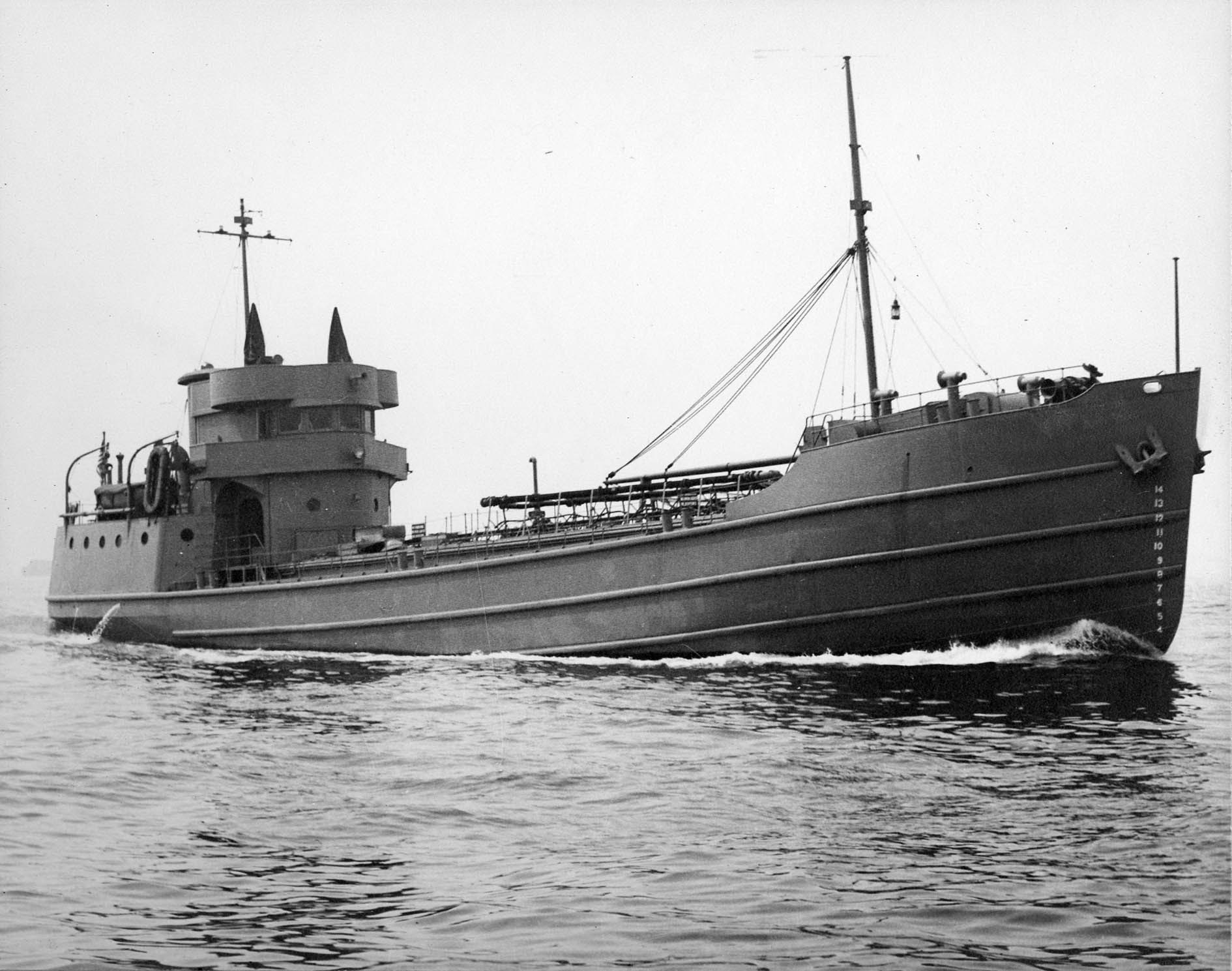
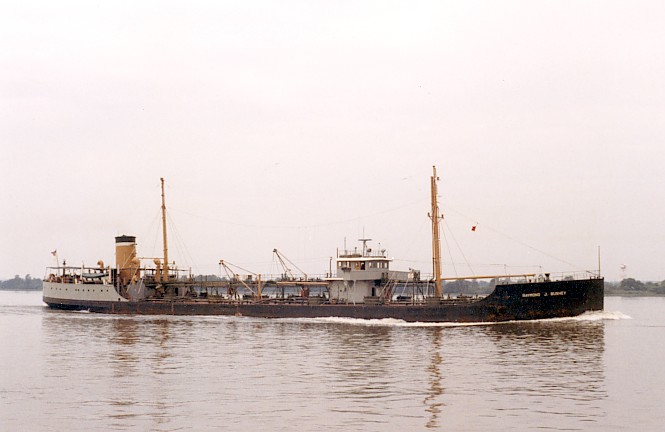
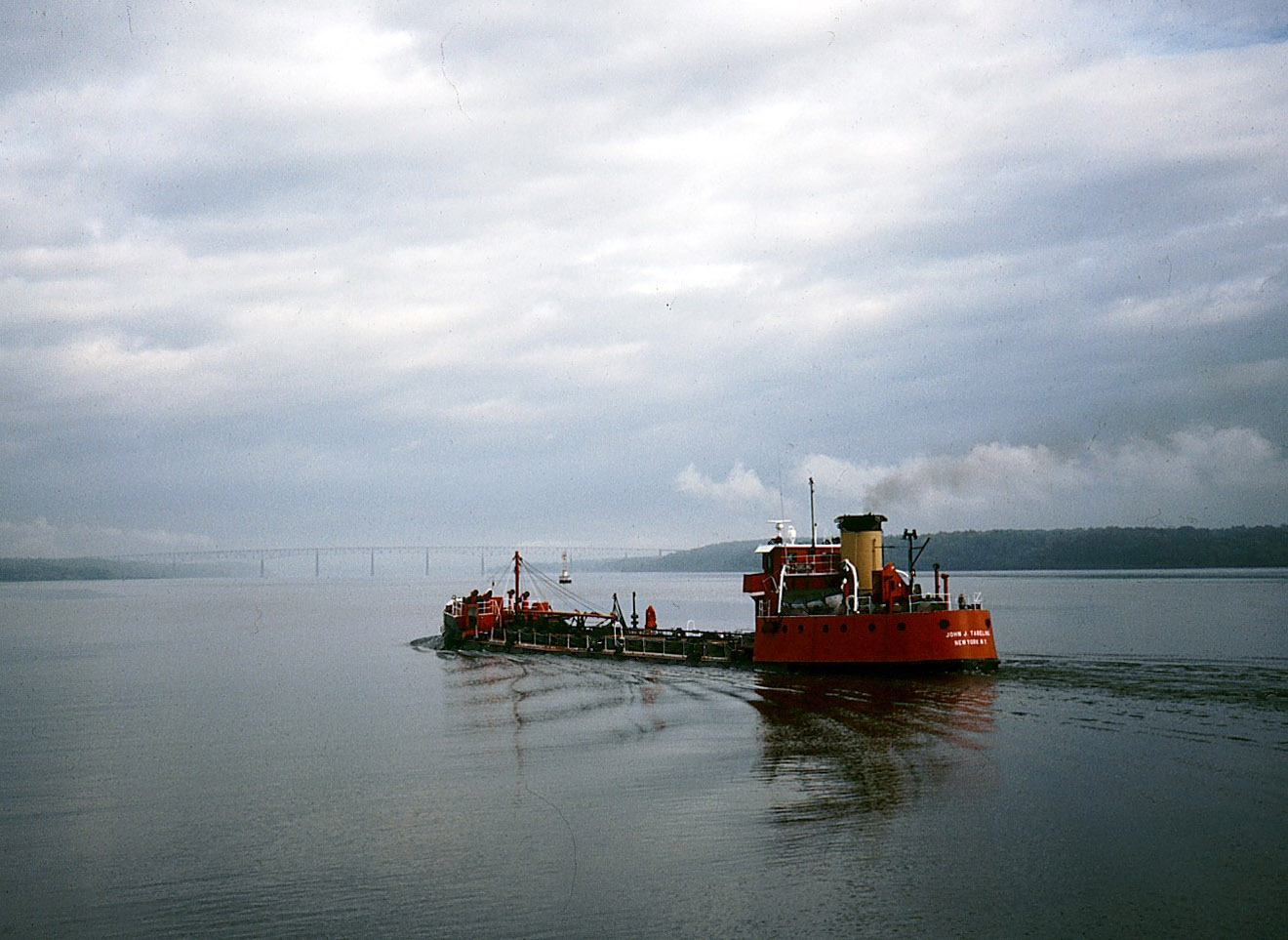
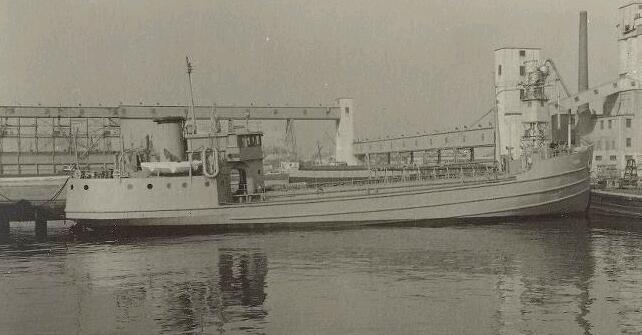
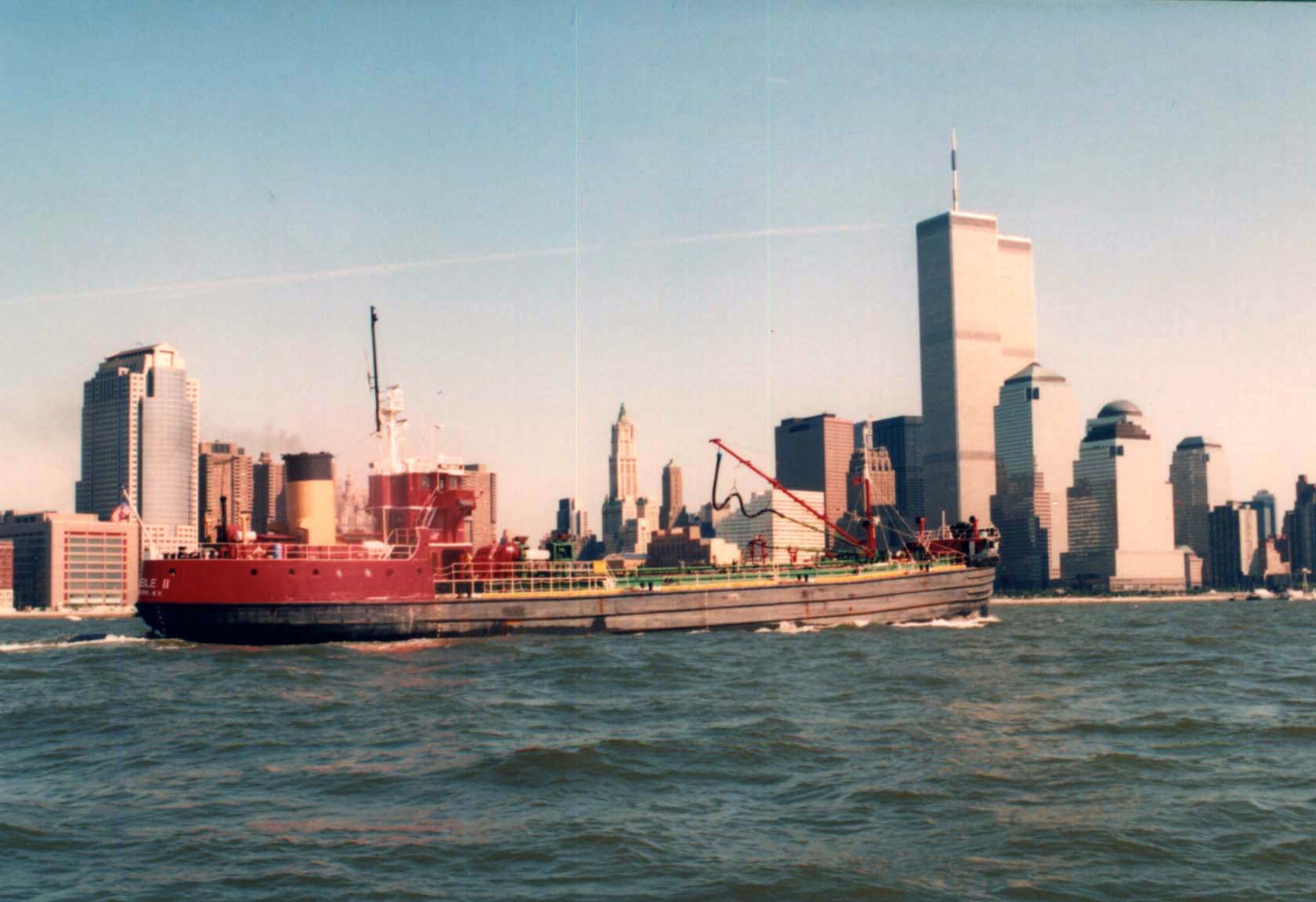

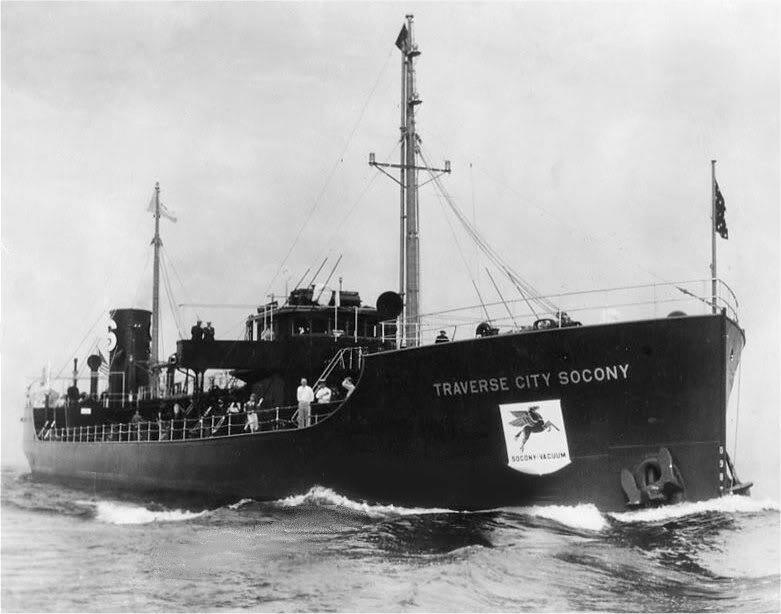


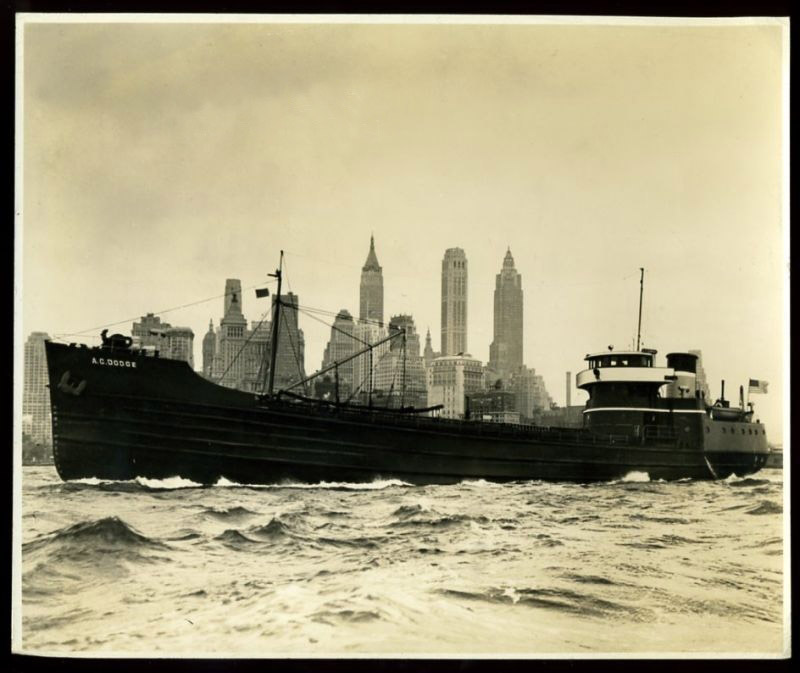
Thanks to our sponsors and partners!
The exterior of the MARY A. WHALEN is being restored in large part with labor from the painters' union District Council 9 which is using the ship as a training site. Local 806 paints steel; the Commercial Painters painted the galley; the Metal Polishing Division strip paint from bronze and Monel metal parts. PortSide provides projects; they give us labor; and we partner in training union labor. The exterior paint is thanks to a generous donation by International Paint.

